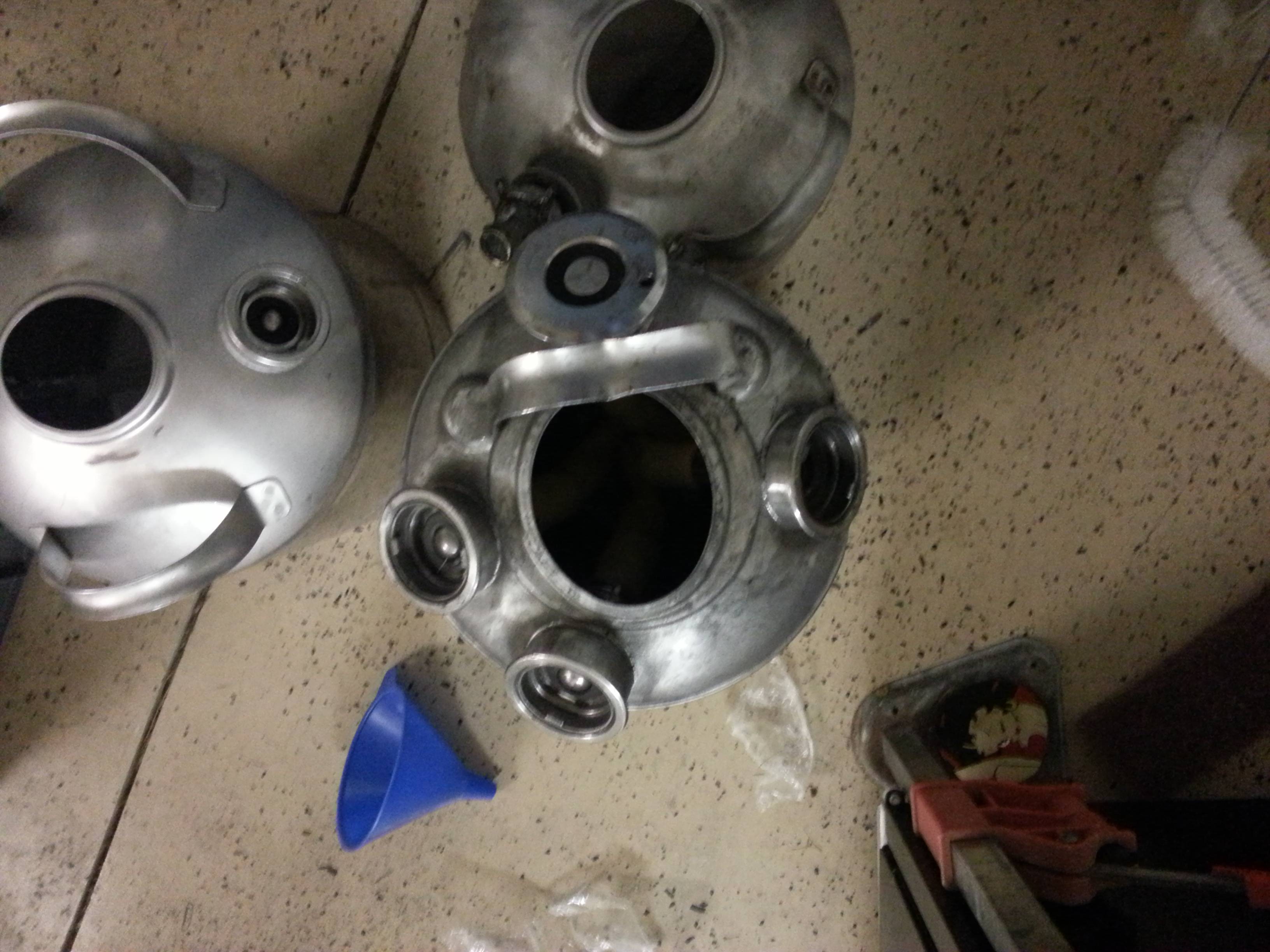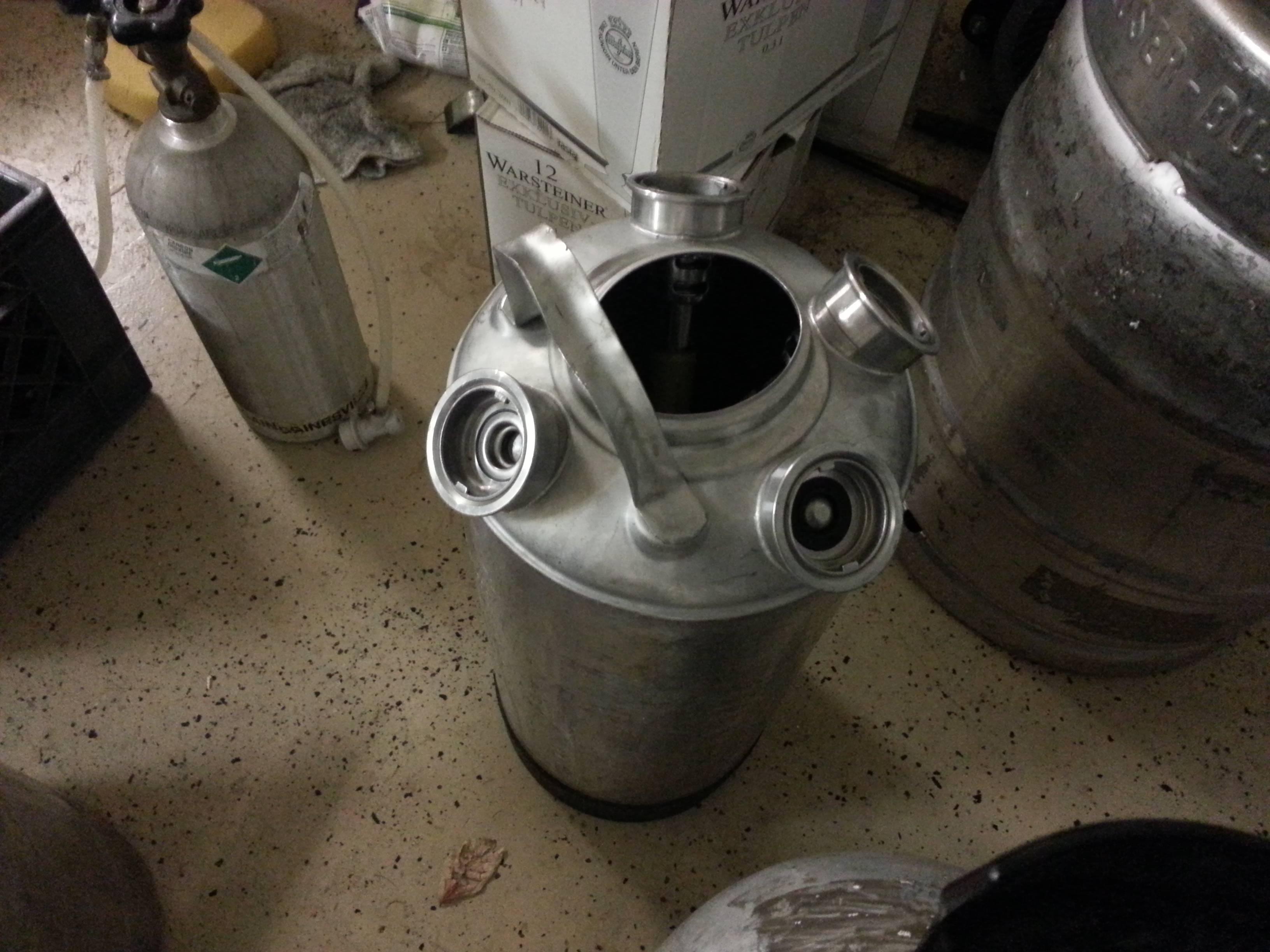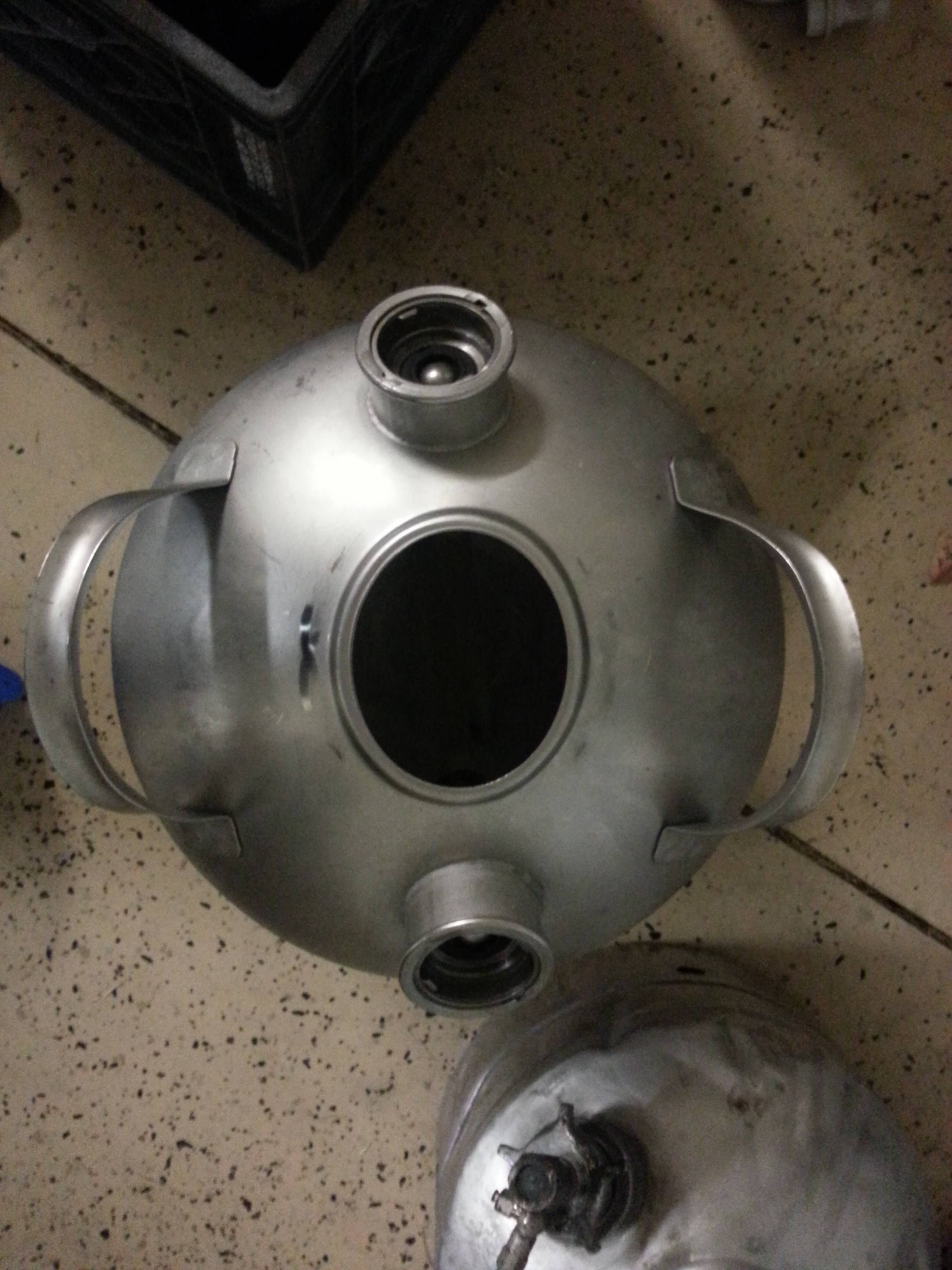Earlier today, I created a post asking for helping identifying a keg part and @JuanMoore quickly provided an answer. However, turns out how I have more questions!
There are three kegs in question here; Keg A, B & C. Each keg accepts a D-type coupler.
First question is a larger-scale question: How does one carbonate a sanke keg? Also, are each of the kegs that follow considered sanke keg? When I search for "sanke kegs", Google returns the standard 15.5 gal, one valve kegs that BMC use primarily.
Keg A: Appears to have a 3x type D couplers connections plus a type A coupler. Why?

Keg B: Has what looks like 2x type D couplers, except each port is slightly different. My guess is one is gas in, that other is liquid out, which which is which? It has two of each ports, too. Why is that?

Keg C: Here's a cool little 5 gal keg. If the above is true for an in and out, this doesn't have that -- it just has two of the same type of ports. How do I use/carb this sucker?

Thank you very much for your help!
There are three kegs in question here; Keg A, B & C. Each keg accepts a D-type coupler.
First question is a larger-scale question: How does one carbonate a sanke keg? Also, are each of the kegs that follow considered sanke keg? When I search for "sanke kegs", Google returns the standard 15.5 gal, one valve kegs that BMC use primarily.
Keg A: Appears to have a 3x type D couplers connections plus a type A coupler. Why?

Keg B: Has what looks like 2x type D couplers, except each port is slightly different. My guess is one is gas in, that other is liquid out, which which is which? It has two of each ports, too. Why is that?

Keg C: Here's a cool little 5 gal keg. If the above is true for an in and out, this doesn't have that -- it just has two of the same type of ports. How do I use/carb this sucker?

Thank you very much for your help!



